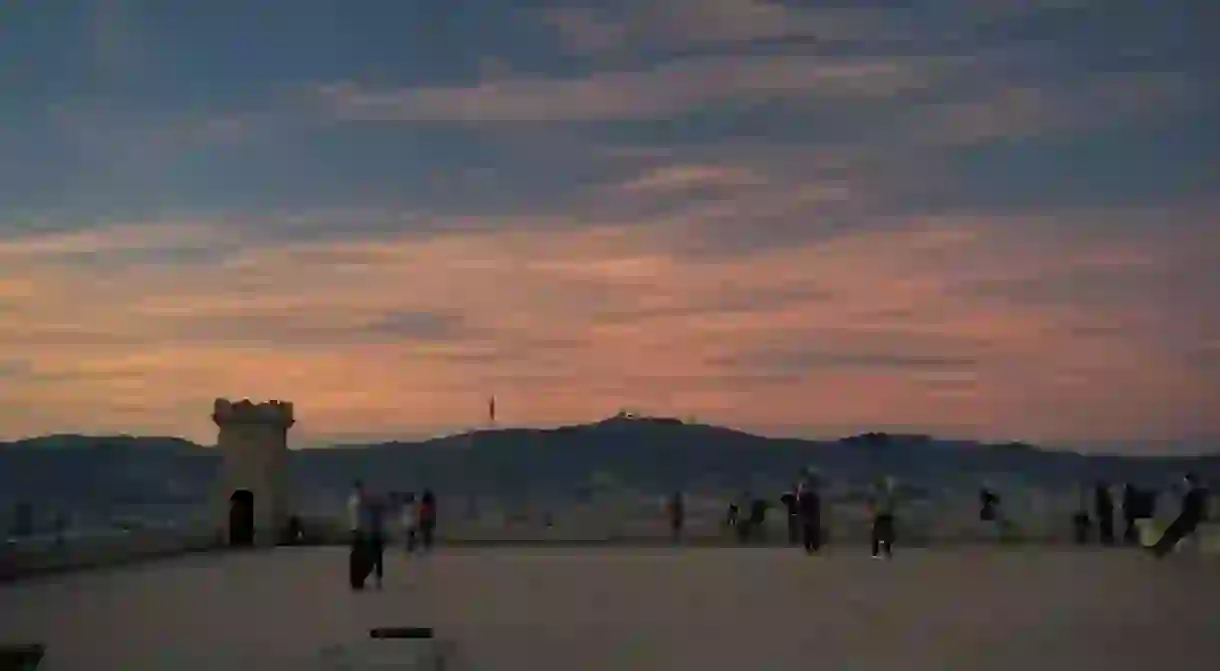10 Things to Know Before Visiting Montjuïc, Barcelona

Located to the south of Barcelona, Montjuïc is a landmark hill that is home to some of the city’s most popular museums, attractions and gardens. If getting to the top will require a bit of effort – or a ride on a bus – there’s plenty to see along the way on this historic piece of land.
Its name means ‘Jewish mountain’
Early references to the hill describe it as the ‘Jewish mountain’ in both medieval Latin and Catalan. While the precise reason for this isn’t clear, there’s an ancient Jewish cemetery on the side of Montjuïc, which indicates that there was a Jewish community here at one time. However, as in many places across Catalonia and Spain, the Jews were subjected to a series of pogroms from the 14th century onwards.
It was one of the first places to be inhabited in Barcelona
Because of its privileged situation on the edge of the sea and alongside the Llobregat River, Montjuïc was an obvious settling point for the first people to arrive in this part of Catalonia. The hill appears to have been inhabited in the Iberian era, in the 3rd and 2nd centuries BC, and served as the quarry of Barcelona throughout much of the Roman era.

The castles served as a prison during the Spanish Civil War
One of the darkest moments in the city’s history, the Spanish Civil War ripped through Barcelona and left many dead and injured in its wake. Montjuïc Castle served as a prison and execution ground for both sides of the conflict, and it remained a political prison and suspected torture cell for much of the Franco era. It was inaugurated as a military armour museum in 1963 and was transferred to the local council of Barcelona only in 2007.
This is where much of the 1999 Olympic Games took place
One of the most popular attractions on Montjuïc, the Olympic stadium was designed for the 1992 Olympic Games, an event credited with making Barcelona the world-famous tourist destination it is today. The stadium is open to the public and notable for its incredible architecture, including the impressive Communications Tower, designed by notorious Spanish architect Santiago Calatrava. There’s also an Olympic museum with memorabilia and kid-proof interactive exhibits.

It offers one of the best panoramic viewing points of the city
Not only does Montjuïc offer great views of the city, it also boasts some pretty incredible vistas of the Mediterranean. Start by a stop at the Mirador de l’Alcalde, a peaceful viewpoint which offers undisturbed views of the city from above. Next, head to the top of the hill and stand by the side of the castle for a dramatic view of the Mediterranean and the port – usually full of super-sized cruise ships.
You can rid to the top in a ski lift
They may not call it a ski lift, but the glass pods that climb Montjuïc each day are identical to those you would find on the slopes. The cable car was originally installed in the 1970s when it operated as an open-roofed gondola, but it was reopened with closed glass pods in 2007. The Montjuïc Cable Car is a great way to reach the top of the mountain if you’re not able to walk there, or just fancy the thrill of it.

There’s a municipal swimming pool with an epic backdrop
Open only in the months of July and August, the Montjuïc municipal swimming pool has one of the most incredible views of the city. Just ask Kylie Minogue – the video for her 2003 hit song ‘Slow’ was set at the Montjuïc swimming pool and starts with a jaw-dropping shot of a professional swimmer jumping off the diving board. What’s more, as it’s run by the local council, the entrance fee has been kept at a relatively affordable €6 per adult.
Montjuïc played its part in defining the length of a metre
In 1792, French astronomers Jean Baptiste Joseph Delambre and Pierre François André Méchain embarked on a mission to measure the meridian arc distance between Barcelona and Dunkirk, where the Castle of Montjuïc was chosen as the measuring point in the city. Following a series of complex measurements, the metre was then established as one ten millionth of the distance between the North Pole and the Equator, calculated thanks to the measurement established from Montjuïc.

It’s home to some of the most beautiful gardens in Barcelona
There are a number of beautiful parks and gardens on the slopes of Montjuïc. These include the Grec garden, so named because of the Ancient Greek-inspired amphitheatre carved into the rock. There is also the Laribal garden with its romantic waterfall stairway, inspired by the Generalife gardens near Granada. Finally, the Mossen Costa i Llobera Garden is dedicated to cacti species and boasts some incredible succulent plants.
There’s an outdoor bar awaiting those who make it to the top
One of the hill’s best-kept secrets, La Caseta del Migdia is a laid-back outdoor bar and snack-shack which opens in the evenings throughout the summer and much of the rest of the year. What better way to reward yourself for the hike to the top than with a nice cool beer overlooking the Mediterranean? Fortunately, if you don’t make it all the way up, you can still grab a drink with an epic view at Martínez.














